Specialists - Year 5 & 6 Week 4
Week beginning – 4 May 2020
If you want to see last week's Specialist pages again, click here.
P.E.
30-45 minutes per day
*Download the 60 Second Challenge Activity Tracking Sheet to track your progress! Click here
Monday
Warm-up
60 Second Challenge: Burpee Click here
Physical Scavenger Hunt
Find and touch all the common household items listed.
When you find each item, touch it and check it off your list. Then perform the exercise that matches that item.
Once you complete the exercise, you can move on to the next item.
Time yourself and see how quickly you can complete the physical scavenger hunt challenge!
Mr M completed this challenge in 10 minutes. Can you beat his score?
Click here to access the challenge sheet and exercises!
Tuesday
Warm-up
60 Second Challenge: Air Balloon Click here
Fitness Challenge
Try and perform each of the following exercises to accumulate points. You can play against someone else or you can try and get your own high score!
Keep track and play as many times as you can to set a high score.
Mr M’s best score is 10, can you beat his?
Mrs Yue-Lambs' best score is 13, can you beat hers?
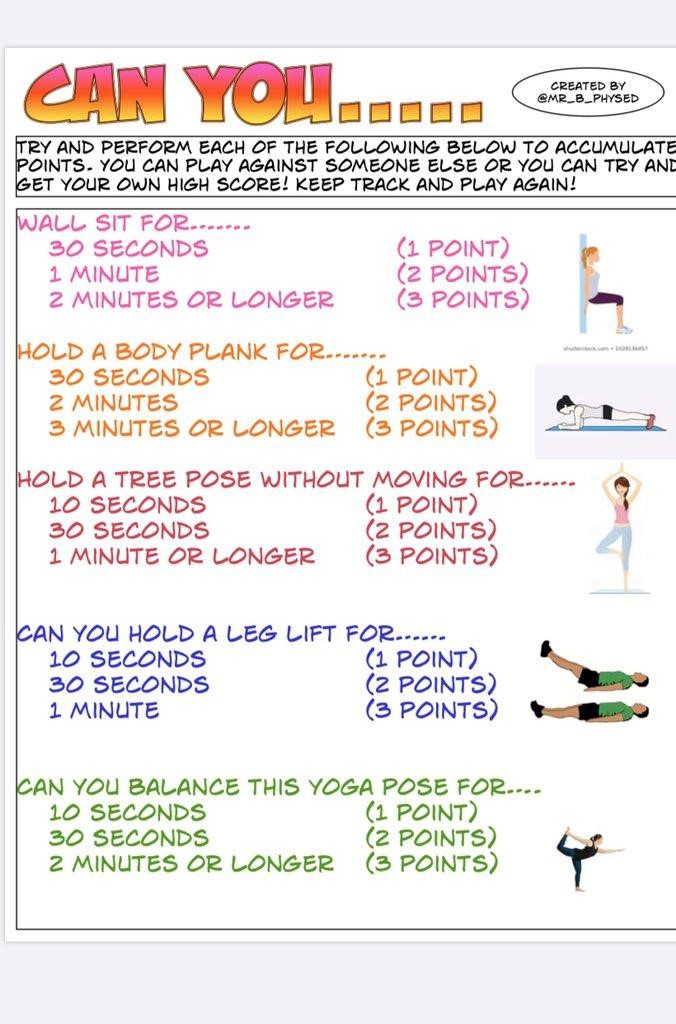
Wednesday
Warm-up
60 Second Challenge: Around the World Click here
Not in my backyard
Steps: Place a skipping rope, towel or string on the floor.
Spread soft toys or bundled socks all over the playing space (on one side of the rope) as the ‘rubbish’.
On the signal “READY, SET, GO!” throw each piece of rubbish across to the other side of the rope ('out of your yard').
Use a stopwatch to time how long it takes to get all items across the line.
If there is a second person you can play with (a brother or sister), then they will be on the other side of the rope and the game becomes a “battle” to see who can throw the most rubbish into their neighbour’s yard. You can use an iPad to film throwing technique – based on correct overhand and underarm throwing what feedback can you give yourself to improve technique?
Questions: When you were rushing, what happened to your technique?
Do you think people rush when playing team sports? If so, what makes them rush?
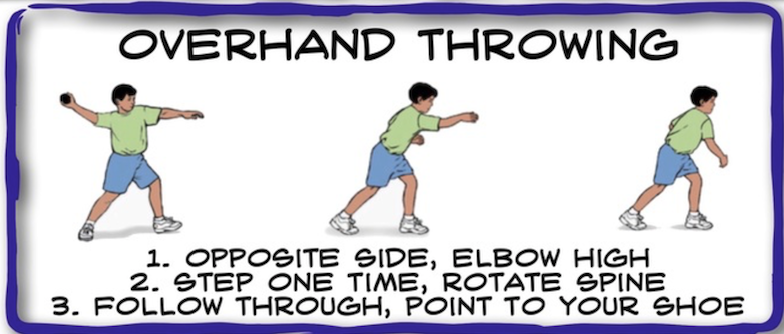
Thursday
Warm-up
60 Second Challenge: Bean Bag Throw Click here
Wall Ball
Steps: You will need a rubber ball (high bounce ball) or a tennis ball for this activity.
Rebound the ball off a brick wall, the ground and then catch - repeat 5 times in a row.
After you catch the ball 5 times in a row, try some of these variations:
- Rebound the ball up and clap 1,2,3 or more times – what is your best score?
- Rebound the ball, turn around and catch
- Rebound the ball, touch the ground with one hand, stand up and catch
- Try with your right hand, left hand, both hands
What other tricks can you come up with for catching – can you teach someone else in your home?
Can you turn this into a game that includes scoring?
Questions:
What part of your hand do you use to catch?
What was your best score for clapping your hands when you threw the ball in the air?
Mr M can throw a ball up in the air and clap 15 times before catching. Can you beat his score?
Mrs Yue-Lambs’ best score is 12, can you beat her score? What was your favourite catching trick?
Friday
Warm-up
60 Second Challenge: Bunny Jumps Click here
Balancing
Today we are going to learn how to balance.
Balancing is a great way to practise being a professional ballerina, ninja or statue.
Find a safe space inside or outside your house.
Complete the following balancing challenges.
What will you aim to be? Perhaps you will be a ballerina, ninja or spy?
Click here to access your daily balancing challenges. Do you have what it takes to be a master of balance?
Spanish
30 minutes per week
A reflection from Term 1 - Written task (30 minutes)
This activity is an opportunity to share your feedback about learning Spanish in Term 1.
Write your reflection in your Spanish books - I am looking forward to reading these.
Consider the following questions to guide your writing:
- What are your areas of strength in Spanish (writing, reading or speaking)?
- How have you contributed to classroom learning?
- Did you complete your weekly tasks?
- Which tasks challenged you?
- Were there any particular tasks that you liked/disliked?
- What are your preferred ways to learn (individual, pair work, small groups)?
- What are your learning goals for next term? What needs to happen for this goal to be achieved?
- What are your challenges in Spanish Learning from Home?
- Do you have any suggestions about how I can best assist you in your home learning?
- What topics would you like to learn about throughout the year?
Music
60 minutes per week
The activities you have been doing over the past few weeks will help you with your lessons from this week on.
You will need the instrument you made from week 2, and your poster from week 3.
Listen to this piece of music called 'Hoe-Down' composed by Aaron Copland: Click here
You can read more about Aaron Copland and his other works here: Click here
A Hoedown is a lively barn dance that comes from America.
This particular piece of music is from a ballet about a cowgirl who is trying to impress the head wrangler of the ranch.
What is the form of this song?
Listen carefully and hear where the changes are.
Are there any sections repeated?
Write down the sections of this song and the times when it changes from one section to another.
If you're really stuck, look at the Specialist page for Years 3 and 4 where I have written the form of the song.
Or you can look at the Year 1 and 2 page for a simple explanation and breakdown of times.
Using the instruments you made for your music lesson in week 2, play the rhythm along with the start of the A section.
You should be able to work out where the A section is by listening for the following rhythm pattern (this is played by the strings and xylophone):
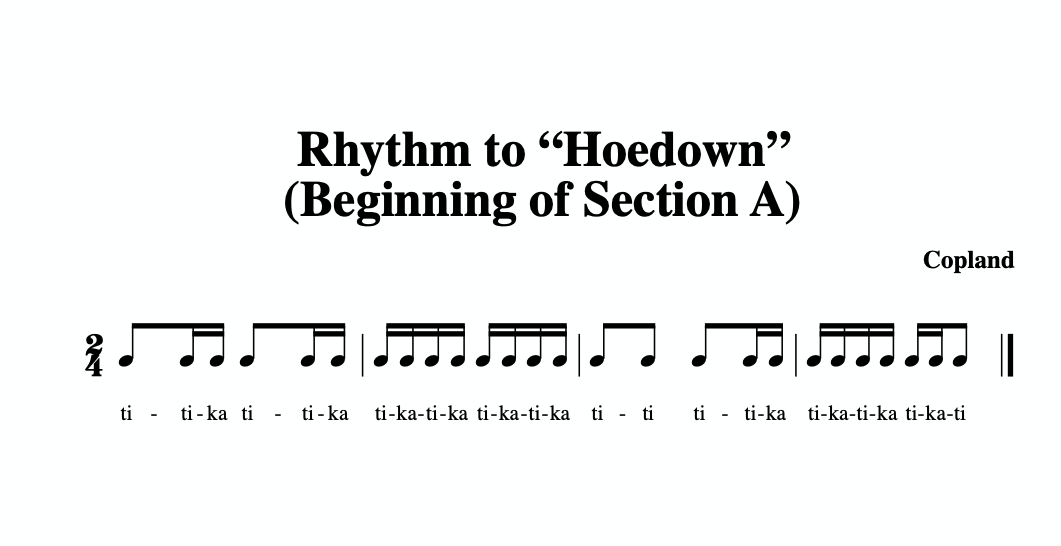
Say the rhythms out loud to help you get the feeling of the rhythm.
Start playing it slowly, then at speed with the song.
If you would like a challenge and have an instrument at home (piano, flute, guitar, etc.) you can try and work out the melody to this rhythm. This part of the song is in D major (for those of you who have C instruments).
Write some lyrics to go with this rhythm. Your lyrics should reflect the mood and setting of this song.
Extension for students who play an instrument:
Those of you who would like to learn how to play part of music to Hoe-Down, you can download or view the sheet music for your instrument from the following website: Click here
There are different levels for your instrument.
Art
60 minutes per week
Year 5
Junkbot Construction Weeks 4 & 5
Draw a detailed picture of the robot you would like to create.
Use a full A3 page (in your book if possible) so you can clearly detail the parts of your machine.
How is your robot useful?
What skills does it have?
Will it have a moveable mechanism?
What will it need to perform specific functions?
What kind of character does it have?
Perhaps consider how having a robot might be useful in a lockdown situation.
Let your imagination run free and consider how you will create the features of your robot later, when collecting pieces for construction.
Please remember our school rule of no weapons when designing your artworks.
Consider what you have collected so far (if anything) and what might be available in your house at the moment.
Gather what you think you will need, make sure things are clean and check with parents if it’s ok to use them.
You will also need masking tape or electrical tape, glue, a stapler, scissors and scrap paper or card.
Start building after you have completed your drawing and collected your materials.
The constraints of this design are that it must be about the size of an average electric kettle and must stand up on its own. Some elements may exceed the size limitation, such as antenna and moveable extensions.
Possible materials
Bottle tops, lids, atomisers, pumps, plastic bottles, recycled containers and lids, etc..
Packaging: moulded cardboard, bubble wrap, clear plastic sheeting, small boxes, bread ties, wire, disposable cutlery, egg cartons, biscuit trays, disposable cups and lids, broken toys, clean tins, old buttons, broken clothes pegs, broken machinery, tapes and CDs.
Tips
Hide your tape and staples if possible.
Joins MUST have two flat surfaces to glue together.
You usually only need a little glue.
Turn boxes inside out for a clean surface.
First aim to get your robot to stand.
Heavy legs or feet help.
As you work, keep checking that your robot can stand and hasn’t become unbalanced.
See paper sculpting techniques in the images below Year 6 lesson.
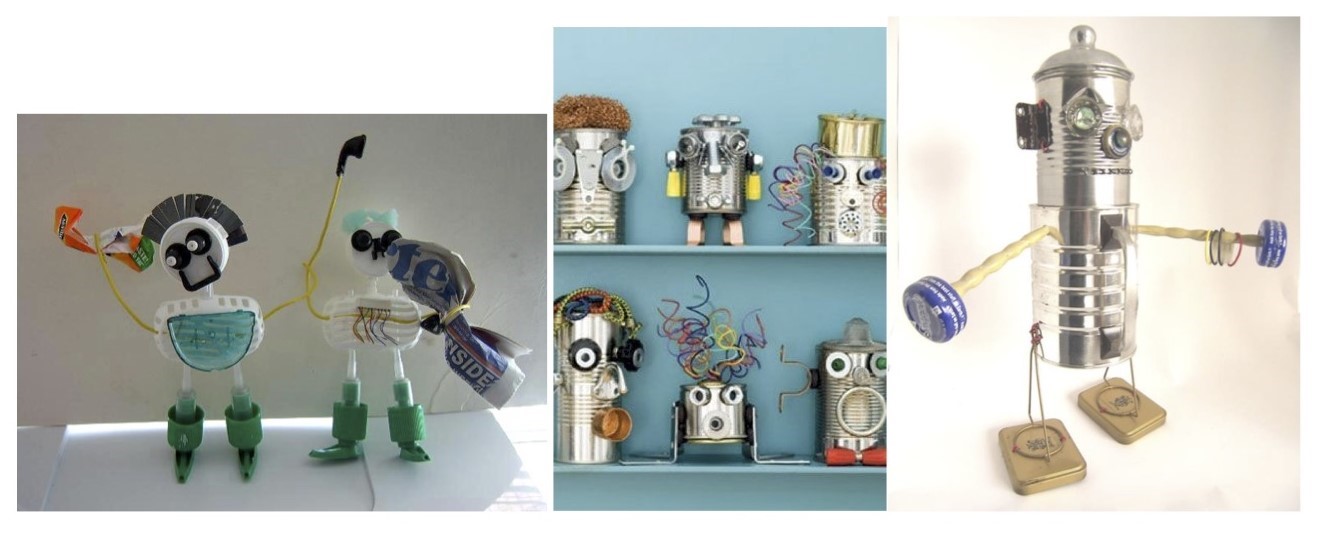
Below are a couple of links to competitions and Art Prizes for Learning from Home.
You can be part of a community of students for creating, contributing and connecting from home.
Home is where the Art is
Why Do You Love Your Brain?
Year 6
Bird Mask Weeks 4 & 5
Consider the features of a bird.
Research images of different types of birds.
What shapes, textures and colours make up the head, beak, brow and eyes?
Draw a detailed picture of a bird mask you would like to create from cardboard and recycled materials.
Use a full A3 page (in your book if possible) so you can clearly detail the parts of your bird head.
Perhaps you will make up an imaginary bird.
Be as creative with your ideas as you can for your drawing and consider how you will create the features of your bird later, when collecting pieces for construction.
Consider what you have collected so far and what might be available in the house.
Gather what you think you will need, make sure things are clean and check with parents if it’s ok to use them.
You will also need masking tape, glue, a stapler, scissors and plenty of scrap paper or card.
Start building after you have completed your drawing and collected your materials.
The constraints of this design are that it must fit on your face or head and you must be able to see out when it is worn.
Possible collected materials
Packaging: moulded cardboard, small boxes, egg cartons, disposable cups and lids, sticks and leaves from outside, feathers, old magazines for cutting out patterns and images.
Tips
Hide your tape and staples if possible.
Joins MUST have two flat surfaces to glue together.
You usually only need a little glue.
Turn boxes inside out for a clean surface.
A mask can be worn like a hat, tied on with string or elastic around the head, or held up to the face with a handle or stick to keep your hand away from your face.
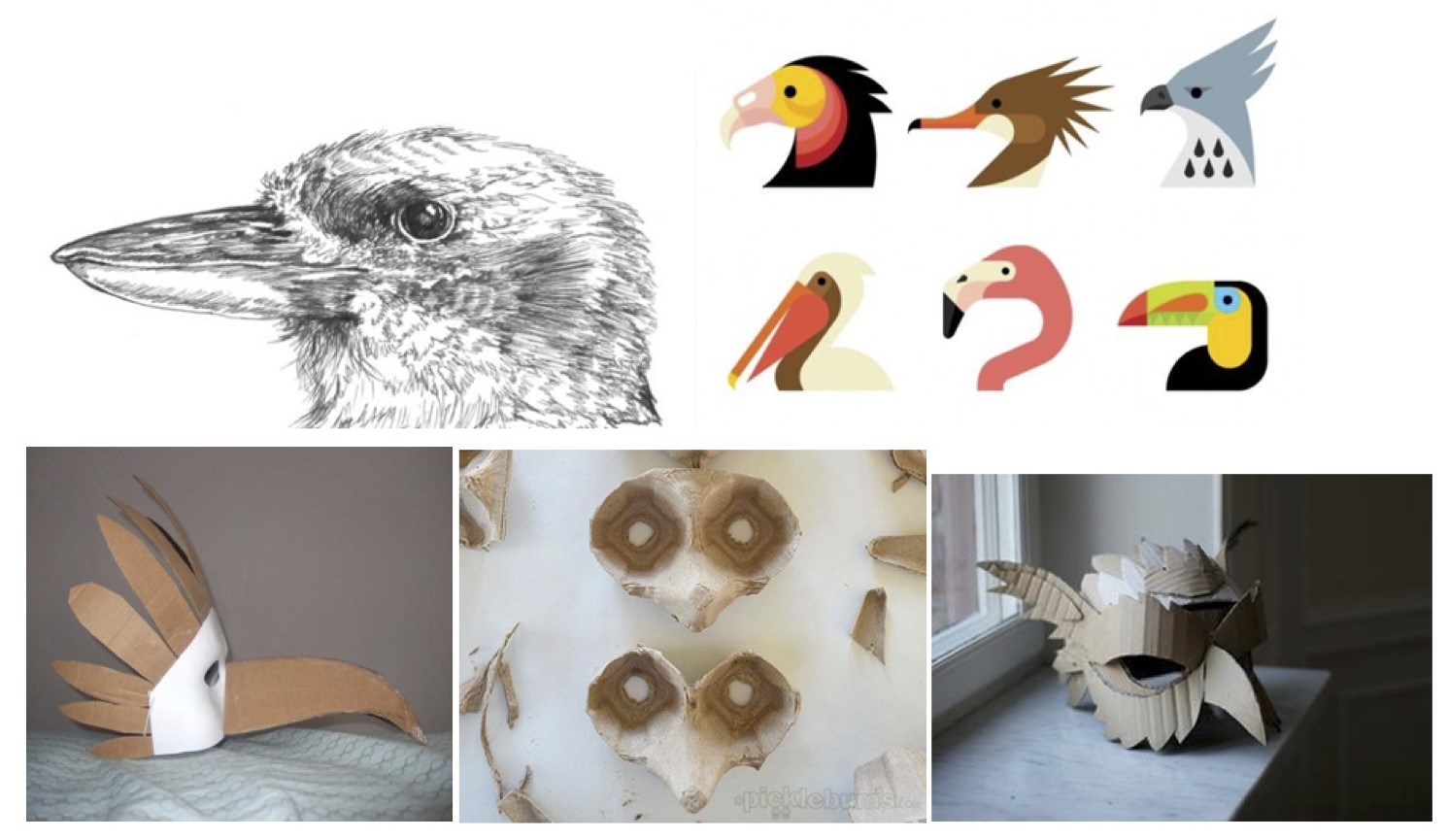
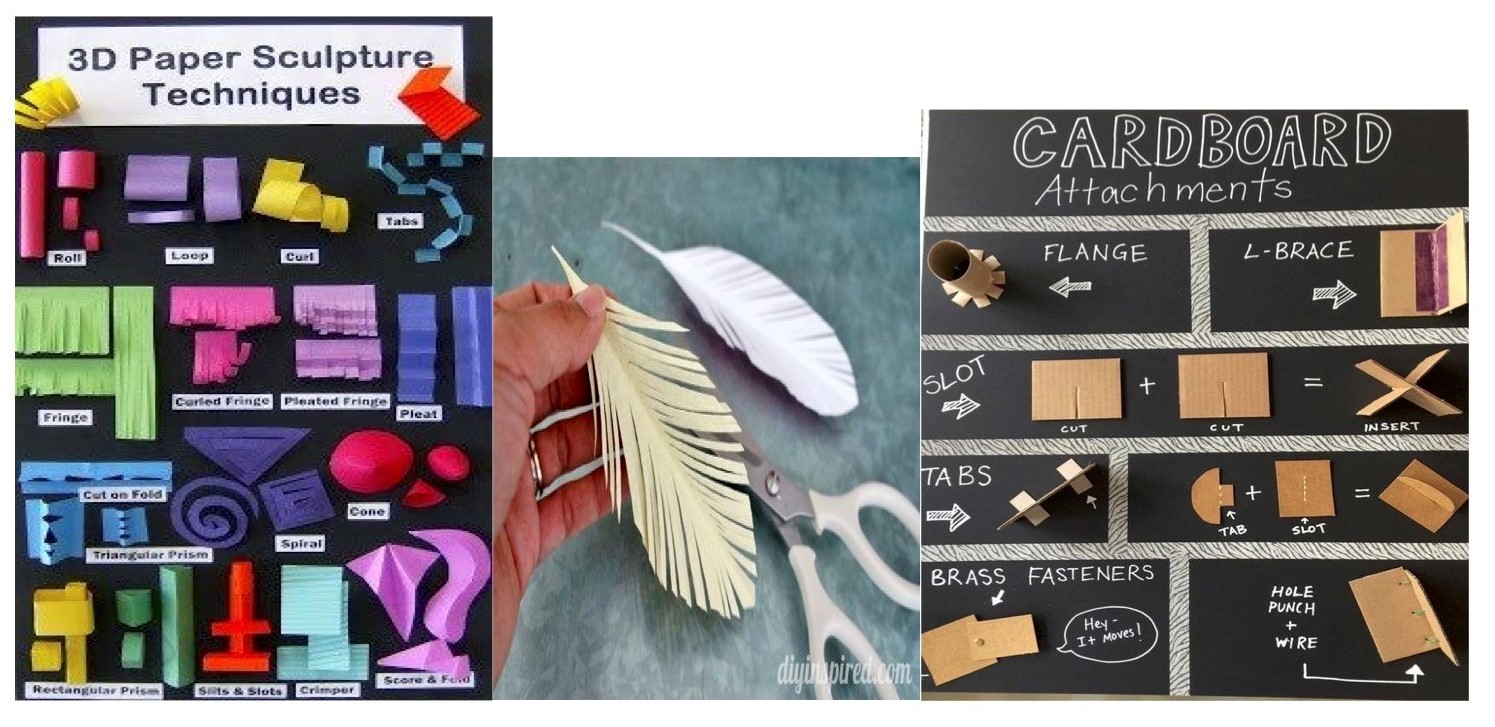
Below are a couple of links to competitions and Art Prizes for Learning from Home.
You can be part of a community of students for creating, contributing and connecting from home.
Library
30 minutes per week - Please note: this is a 3 week unit of work
Read a nonfiction book or magazine about the earth or Click here and read a few pages of interest (use the contents page to help you) from the book ‘National Geographic Kids:Everything Weather’ on EPIC library.
Create a poem around one of earth’s elements – earth, wind, fire or water.
Your poem can focus on one or more of the elements.
Think carefully about which element you will choose.
Your focus could have a positive or negative impact about that element.
|
ELEMENT |
POSITIVE |
NEGATIVE |
|
Earth |
life, nature, new growth |
drought, earthquake |
|
Wind |
spreads seeds to propagate, flies kites, dries washing |
cyclone, tornado
|
|
Fire |
used for heating, cooking |
bushfire |
|
Water |
life giving source, used in recreation |
flood, tsunami |
Use any type of poetry that you wish e.g.
Acrostic - a poem in which the first letters of each line spell out a word or phrase vertically
Haiku - a three lined poem with a total of 17 syllables.
The first and last lines have 5 syllables and the middle line has 7 syllables.
Diamante - an unrhymed seven line poem in a diamond shape.
The first and last lines are the shortest.
Rhyming - a poem that uses rhyme.
Couplets - 2 rhyming lines, Quatrains - 4 rhyming lines.
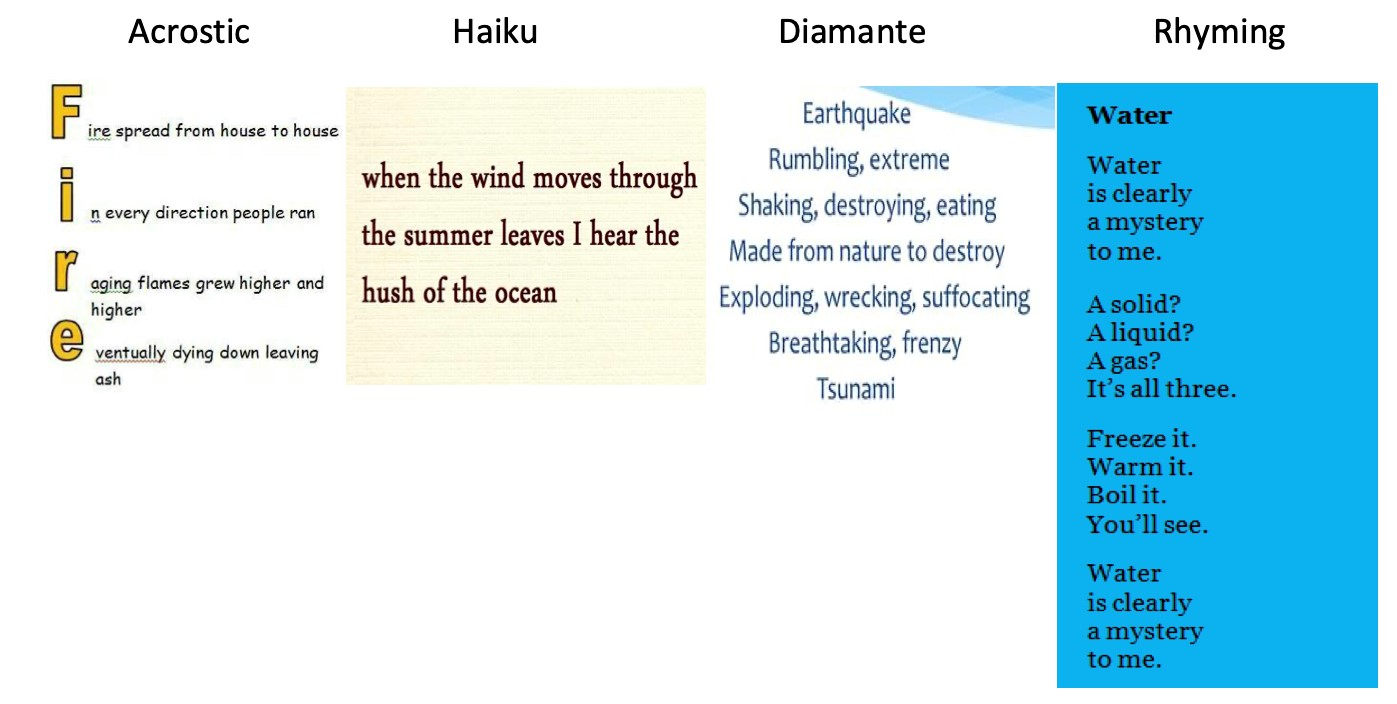
© Copyright Laburnum Primary School
